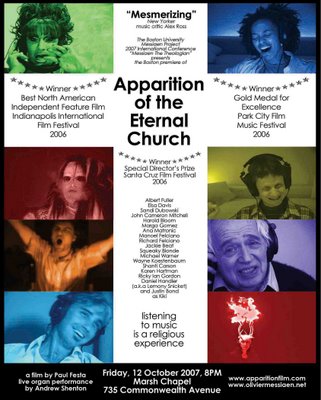 Fresh paint, bright banners, million-dollar condos:
Fresh paint, bright banners, million-dollar condos:"These are wrenching times for San Francisco’s historic gay village..."
Broadly speaking, Patricia Leigh Brown got the story right: the Castro has become a gentrified version of itself that is too precious and expensive to welcome gay refugees from those terribly benighted flyover states, and the need for such a mecca has diminished as those places have become less benighted.
The trouble with the story is that it mixes up distinct phenomena: gentrification, straightification, and Halloween, and it tries to freshen a story without acknowledging that it's twenty years old and far more complex than the story makes it seem.
The Castro is a neighborhood, not a museum. It changes gradually but sometimes radically. Since turning gay thirty years ago, it has followed the gentrification trajectory that has revived or plagued urban neighborhoods (depending on your point of view, which is probably determined by your income) since the Reagan administration at least. What happened in the Castro isn't very different from what happened in SoHo or the Haight Ashbury over the hill--in fact, according to Randy Shilts in his brief history of the neighborhood in The Mayor of Castro Street: The Life and Times of Harvey Milk, it was because rents were going up around Haight and Ashbury that young immigrant gays transfered operations to 18th and Castro. Like artists (which many of them were), gays made the Castro attractive and comparably safe. The neighborhood was unaffordable twenty years ago, a disappointment for young people who wanted to move there whether they were seeking refuge, community, easy sex, or all of the above. It became especially unaffordable, like most parts of San Francisco, after Marc Andreessen commercialized the Web browser twelve years ago. The idea that Arquitectonica condos mark some sort of sea change is nonsense.
the prospect of half-million-dollar condos inhabited by many straight people underscores a demographic shift.
Many straight people? This is reportorial laziness pure and simple, not just because of the safe, virtually meaningless "many," but because it smooths over the single most salient difference between the gays generally and the true victims of urban gentrification (primarily disadvantaged ethnic minorities but also young people generally and artists, though they're typically part of the problem). By and large, the gays have held onto the Castro. The blacks have not held onto the Fillmore. The Italians have not held onto North Beach. Yes, there are strollers and same sex couples marauding through the streets of Eureka Valley, but they were there ten years ago and they were there thirty years ago. As for the gays, the new arrivals may be unable to afford an apartment at Diamond and 19th (join the club), but their older gay brothers and sisters have double incomes, most of them have no kids, and they have jobs in venture capital and law and high-tech. They have stock options. They get their nails done. The gays are getting pushed out of the Castro and other gays are moving in.
And what about those huddled masses of young gay men and women, yearning to live in the gay ghetto? Brown clearly did not do her research at night. There are more fun parties, packed with younger and far more ethically diverse gay crowds, on almost every night, in the Castro, than at any time in my memory. 440 Castro (formerly Daddy's) is packed with kids on Wednesday nights. So is the Bar on Castro on Thursdays, the Cafe on Fridays. These multiracial young people may not be able to call the Castro home--yet--and they may never want to. But they sure do party there, and as the story reports from shrinks with the 'Net-addicted, depressed gay clients, the night life ain't nothing.
The last thing that bothered me about Brown's story is lumping in the Halloween debacle with the gentrification issue. Unrelated! Except, perhaps, if you're going to draw some sort of analogy with the uncostumed straight Muggles wrecking the party for the rest of us. Is the Castro in the grip of a crime wave, of which the Halloween shootings are an integral part? Show me the numbers. I'd be extremely surprised if crime rates in the neighborhood are significantly worse now than they were ten or twenty years ago.
I gave up on Halloween in the Castro long ago, and it had less to do with unwelcome heterosexuals than unparticipatory spectators, teenage rowdiness and, frankly, boredom. That straight woman whose babies wear "I love my daddies" t-shirts? At least she's trying.




